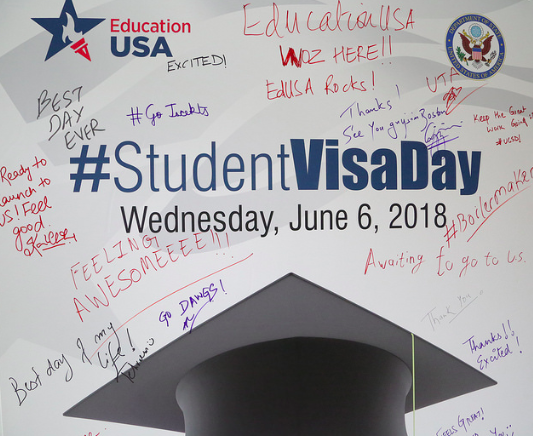New Delhi: Despite reports of a sharp drop in international applications to US universities, the halls of the US embassy were flooded with eager Indian students attending this year’s US Student Visa Day 2018 on Wednesday, June 6. While people here and abroad continue to worry about the US government’s stance on immigration, how these policies will impact Indian students’ interest in US colleges remains up in the air as well.

Credit: U.S. Embassy New Delhi/ Flickr
Many Indians still view the US as a wonderland. The idea of the American dream is so potent that many students want to study there regardless of the Trump administration’s immigration policies.
Are university campuses completely insulated from the US’ political climate, though? Much of Wednesday’s event focused on alumni answering students’ questions about the difference between the US under Barack Obama and Trump.
Nehaa Chaudhari, a Harvard Law alumnus said, “Frankly yes, we did feel it (political tension) on campus. I went to a very liberal campus in the US, the campus was great and mental health facilities in the university are used by around 90% of all students, not just international ones. Outside campus life though, there was a bit of a change just in terms of how we felt we were being perceived as students in the US.”
Another student, Ananya Singh from SUNY Buffalo said universities often have designated offices and personnel to help international students with everything from visa procedures to settling in. However, such departments have been a staple of international students’ lives for years now, and it remained unclear what new measures universities have (or haven’t) undertaken to address new concerns about racism and xenophobia.
Kritika Singh, a biological sciences student from Rutgers University spoke about her positive experiences in the US – she did her bachelors and master’s there, and is now pursuing a PhD in the US as well. However, even Singh admitted that there was a “sense of panic at the political change,” adding, “but our focus was education not the workforce in the States so it was do-able.”
MaryKay L. Carlson, deputy chief of mission, told students that political disagreements and tensions have always been a part of campus life and it “has been the same since I was in college”.
College life is definitely full of change and navigating that alone is pretty daunting – without the added anxiety of being the target of political disagreements. For students who will be flying out later this year, and the parents who are sending them, these concerns have been bubbling up for the past year and a half. Disha Gopal will start at the University of North Carolina, Chapel Hill this fall, but when she started considering studying abroad, her parents insisted that she apply to colleges in Europe and the UK as well.
While there have been several reports of a sharp dive in student visa applications to the US, Carlson and her colleagues presented numbers that show an increase in Indian students in the US.
“One in six students in the US is foreign and from India,” said Deborah J. Fairman, deputy consul general. Meanwhile, Carlson called the US an “open and inviting country” which had over 186,000 Indian students enrolled in 2017 – a 12% increase in applications in 2017 from 2016. “The narrative doesn’t match reality as the US is still the premier destination for education,” Carlson added.
When LiveWire asked college-bound students if they were anxious about finding jobs in the US or difficulties with the H-1B work visa, they all categorically said they were going to study, nothing else. Singh’s advice to them was, “There are many scholarships available, the US will try to keep you if you stay a good student.” Leaving open questions about what happens if you do want to stay in the US after you’re done being a good student.

